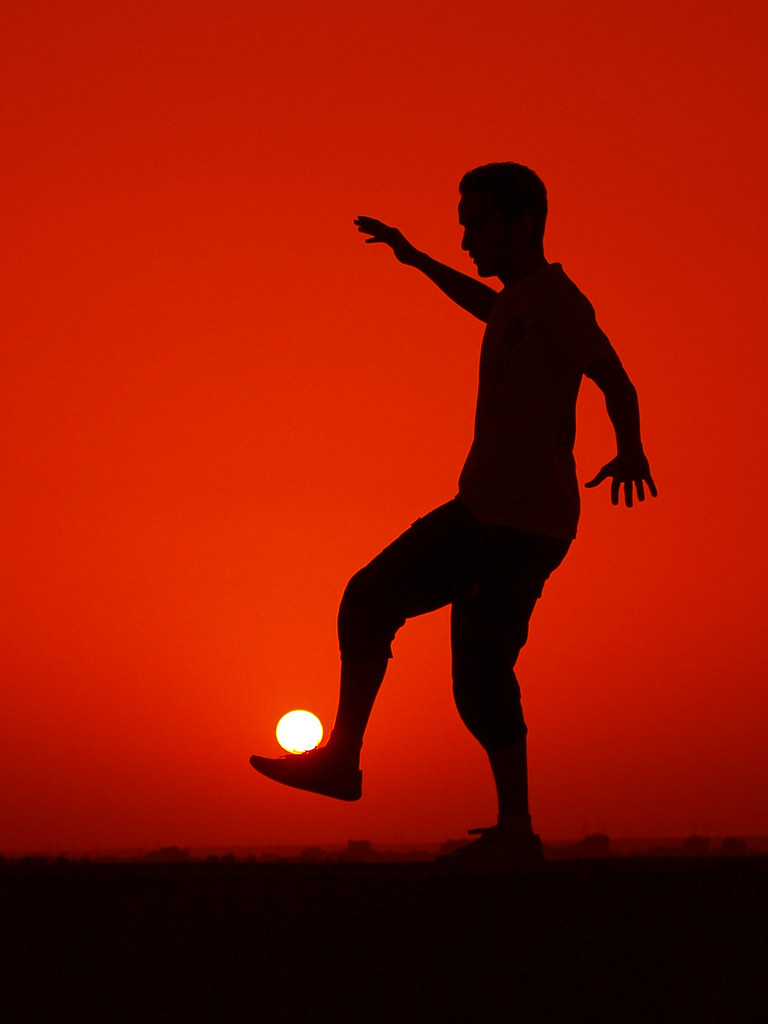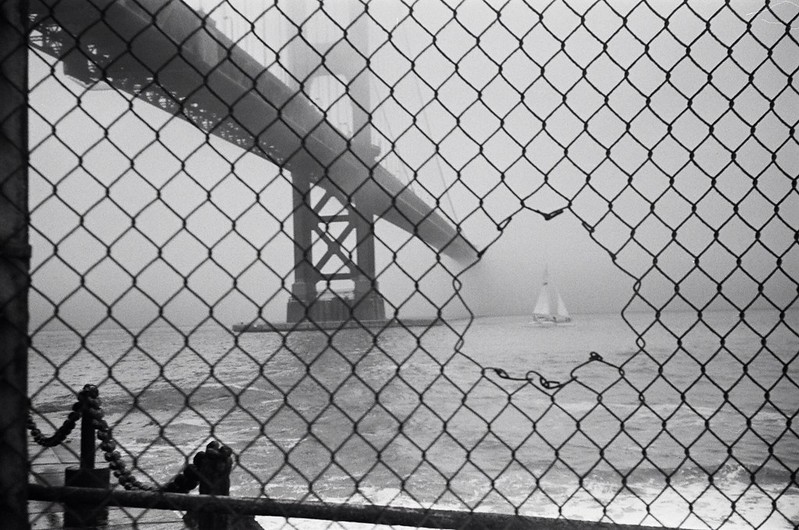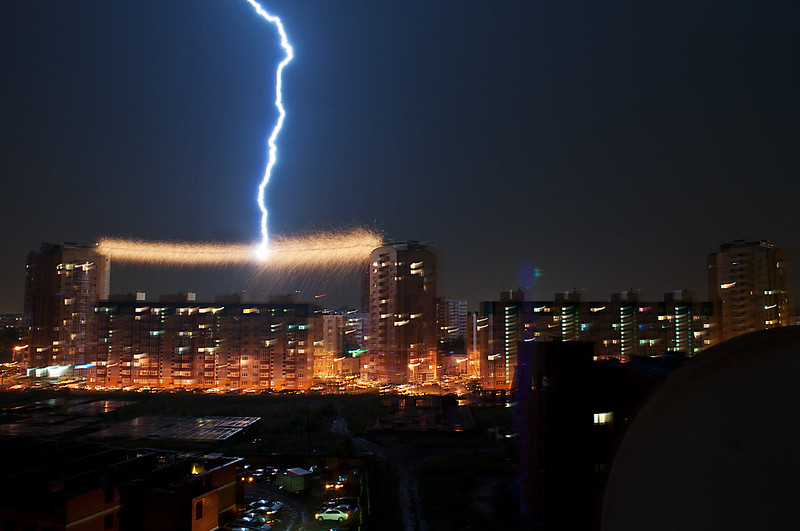Picture > 1000 words
Awesome images that change how we view the world
The Most Iconic Photos Of The 1940s: Hitler in Paris, 1940
Taken at the height of World War Two and after Adolf Hitler had taken Paris, this picture depicts Hitler surveying his conquest with his various cronies and became one of the most iconic photos of the 1940s and World War 2.
The Last Jew in Vinnitsa, 1941
This powerful image of the death of the last Jew in Vinnitsa, Ukraine, was found in the album of an Einsatzgruppen soldier. The name of the image comes from the label at the back of the photo, and succinctly conveys what happened in Vinnitsa: all 28,000 of the Jews living there were killed.
Warsaw Ghetto Uprising, 1943
Shot in 1943, this is one of the best-known pictures of World War Two, as it depicts the terror inspired by the Nazis. The image shows the destruction of the Warsaw Ghetto, which was home to thousands of Jewish citizens escaping the Nazi regime. Though the most poignant part of picture is the frightened little boy in the foreground with his hands up as he is forcibly removed from his hiding place.
Iconic Photographs Of The 1950s: Korean War March, 1950
This LIFE magazine picture is one of the earliest images of the Korean War. In it, American Marines march down a canyon road they dubbed "Nightmare Alley" during a retreat from the Chosin Reservoir.
Segregated Water Fountains, 1950
This image of segregated water fountains in North Carolina was taken by Elliott Erwitt. With just one click, the photograph captured the deep-seated racism prevalent in American society in the 50s and became one of the most iconic photographs of the 1950s.
Iconic Photos Of The 1960s: Guerrillero Heroico, 1960
"Guerrillero Heroico" or "Heroic Guerrilla Fighter" is one of the most popular and stylized pictures of all time. Taken by Alberto Korda on March 5, the image is of the Marxist revolutionary Che Guevara at a memorial service for victims of La Coubre explosion. It is often considered as the most famous image in the world and certainly lionized Guevara's person as it is the most reproduced image in photography.
Assassination of Japan Socialist Inejiro Asanuma, 1960
This picture was taken literally a second before the Japanese socialist Party leader Asanuma was stabbed to death on live TV by a right wing extremist. Photographer Yasushi Nagao, whose modest response was that he was in the right place at the right time, was awarded the Pulitzer Prize for the shot and became one of the iconic photos of the 1960s.
The Most Iconic Photos Of The 1960s: Burning Monk, 1963
Malcolm W. Browne captured this image of the Vietnamese monk, Thich Quang Duc, who set himself on fire to protest the Diem regime's ruthless persecution of Buddhists. The image, needless to say, captured the "hearts and minds" of millions world-over.
One of the greatest facets of reddit are the thriving subreddits, niche communities of people who share a passion for a specific topic. One of the Sifter's personal favourites is r/ColorizedHistory. The major contributors are a mix of professional and amateur colorizers that bring historic photos to life through color. All of them are highly skilled digital artists that use a combination of historical reference material and a natural eye for colour.
When we see old photos in black and white, we sometimes forget that life back then was experienced in the same vibrant colours that surround us today. This gallery of talented artists helps us remember that :)
Below you will find a collection of some of the highest rated colorized images to date on r/ColorizedHistory.
I've also provide a list of some of the top contributors (in no particular order):


"I was told he had come back from playing and found his house a shambles-his mother, father and brother dead under the rubble...he was looking up at the sky, his face an expression of both confusion and defiance. The defiance made him look like a young Winston Churchill. This photograph was used by IBM to publicize a show in London. The boy grew up to become a truck driver after the war, and walking past the IBM offices, he recognized his picture." - Toni Frissell

































Artist Mads Madsen has an amazing skill for colorizing old black and white photographs. Even beside their original counterpart the results are impressive, bringing a new dimension of realism to historic images. An American Civil War buff, Madsen's 450+ portfolio of images can be seen on minus.com where he has amassed over 2.6 million views. Many of his subjects are portraits of commanders from the civil war.
Madsen says it takes him about 20-30 minutes for a portrait but that the outdoor shots and images with lots of people and background take substantially longer. For a video tutorial of the process involved, you can check him out on YouTube. For a detailed step-by-step tutorial, check out this fascinating post on civilwartalk.com. Oh and I forgot to mention he's only 18! A gifted young talent with much promise ahead, keep up the amazing work Mr. Madsen!























A recent post on MetaFilter (that was subsequently picked up by PetaPixel), shows a handful of uncropped versions of iconic images from the last century.
From politics and war to sports and music, this small collection of images are a fascinating look back in history. Many thanks to Bora Horza Gobuchul on Metafiler and PetaPixel (along with the helpful commenters in each) for the compiling.

Tank Man, or the Unknown Rebel, is the nickname of an anonymous man who stood in front of a column of Chinese Type 59 tanks the morning after the Chinese military forcibly removed protestors from in and around Beijing's Tiananmen Square on June 5, 1989. The man achieved widespread international recognition due to the videotape and photographs taken of the incident. Despite his anonymity, he is commonly (though not necessarily correctly) referred to in Chinese as Wang Weilin, as dubbed by a Sunday Express article. [Source: Wikipedia]
Guerrillero Heroico (English: "Heroic Guerrilla Fighter") is an iconic photo of Marxist revolutionary Che Guevara wearing his black beret taken by Alberto Korda. It was taken on March 5, 1960, in Havana, Cuba, at a memorial service for victims of the La Coubre explosion and by the end of the 1960s turned the charismatic and controversial leader into a cultural icon. Korda has said that at the moment he shot the picture, he was drawn to Guevara's facial expression, which showed "absolute implacability" as well as anger and pain. Years later, Korda would say that the photo showed Che's firm and stoic character. Guevara was 31 at the time the photo was taken.
As a life-long communist and supporter of the Cuban Revolution until his death, Alberto Korda claimed no payment for his picture. A modified version of the portrait through the decades was also reproduced on a range of different media, though Korda never asked for royalties. Korda reasoned that Che's image represented his revolutionary ideals, and thus the more his picture spread the greater the chance Che's ideals would spread as well. Korda's refusal to seek royalties for the vast circulation of his photograph "helped it become the ultimate symbol of Marxist revolution and anti-imperialist struggle." [Source: Wikipedia]


"Million Dollar Quartet" is the name given to recordings made on Tuesday December 4, 1956 in the Sun Record Studios in Memphis, Tennessee. The recordings were of an impromptu jam session among Elvis Presley, Jerry Lee Lewis, Carl Perkins, and Johnny Cash. Marilyn Knowles-Riehl is the mystery woman seated on the piano in the Million Dollar Quartet photo from 1956. She was Elvis' girlfriend at the time and was there in Sun Studios at the legendary 1956 jam session. In fact, her voice is heard on the historic recording. [Source: ElvisNews.com]


Charles Martin Conlon (November, 1868 - 1945) was an American photographer. He worked for New York City newspapers in the early 1900s, as a proof-reader with a photographic hobby before editor John B. Foster invited him to shoot photographs for The Telegram daily newspaper sporting pages and for the Spalding's Base Ball Guide annual.
Charley Conlon took thousands of portraits of major league baseball players. His most famous photo is a fortunate action shot of Ty Cobb sliding into third base at Hilltop Park on July 23, 1910, upending the fielder, Jimmy Austin. Conlon was actually on the field, a common practice of the day, behind third base, under the hood of a large, tripod-supported Graflex camera. He was positioned to the outfield side of the third base coach's box, in foul territory. [Source: Wikipedia]


The " Surgeon's Photograph" purported to be the first photo of a "head and neck" of the Loch Ness Monther. Dr. Wilson claimed he was looking at the loch when he saw the monster, so grabbed his camera and snapped five photos. After the film was developed, only two exposures were clear. The first photo (the more publicised one) shows what was claimed to be a small head and back. The second one, a blurry image, attracted little publicity because it was difficult to interpret what was depicted.
The image was revealed as a fake in The Sunday Telegraph dated 7 December 1975. Supposedly taken by Robert Kenneth Wilson, a London gynaecologist, it was published in the Daily Mail on 21 April 1934. Wilson's refusal to have his name associated with the photograph led to it being called "Surgeon's Photograph". [Source: Wikipedia]


This is a rare photograph that's more of a behind-the-scenes than uncropped picture. It's a studio shot from the making of the Sgt. Pepper's Lonely Hearts Club Band album cover. Often shortened to Sgt. Pepper, it was The Beatles eigth studio album.
The Grammy Award-winning album packaging was art-directed by Robert Fraser, designed by Peter Blake and Jann Haworth, his wife and artistic partner, and photographed by Michael Cooper. It featured a colourful collage of life-sized cardboard models of famous people on the front of the album cover and lyrics printed on the back cover, the first time this had been done on a British pop LP. The Beatles themselves, in the guise of the Sgt. Pepper band, were dressed in custom-made military-style outfits made of satin dyed in day-glo colours.
The collage depicted more than 70 famous people, including writers, musicians, film stars, and (at Harrison's request) a number of Indian gurus. The final grouping included Marlene Dietrich, Carl Gustav Jung, W.C. Fields, Diana Dors, James Dean, Bob Dylan, Issy Bonn, Marilyn Monroe, Aldous Huxley, Karlheinz Stockhausen, Sigmund Freud, Aleister Crowley, Edgar Allan Poe, Karl Marx, Oscar Wilde, William S. Burroughs, Marlon Brando, Stan Laurel and Oliver Hardy, and controversial comedian Lenny Bruce. Also included was the image of the original Beatles' bassist, the late Stuart Sutcliffe. Adolf Hitler and Jesus Christ were requested by Lennon, but ultimately they were left out. [Source: Wikipedia]
See here for a complete list of people on the album cover.


Raising the Flag on Iwo Jima is an historic photograph taken on February 23, 1945, by Joe Rosenthal. It depicts five United States Marines and a U.S. Navy corpsman raising the flag of the United States atop Mount Suribachi during the Battle of Iwo Jima in World War II.
It became the only photograph to win the Pulitzer Prize for Photography in the same year as its publication, and came to be regarded in the United States as one of the most significant and recognizable images of the war, and one of the most reproduced photograph of all time. Of the six men depicted in the picture, three (Franklin Sousley, Harlon Block, and Michael Strank) were killed during the battle; the three survivors (John Bradley, Rene Gagnon, and Ira Hayes) became celebrities upon their identification in the photo. The picture was later used by Felix de Weldon to sculpt the Marine Corps War Memorial, located adjacent to Arlington National Cemetery just outside Washington, D.C. [Source: Wikipedia]



Not only do these awesome photos reveal relationships you might not have known about, they also capture the very essence of eras in time that have come and gone. I'm sure more than a few of these will surprise you...and some might even make you laugh.
If you're a visual learner like myself, then you know maps, charts and infographics can really help bring data and information to life. Maps can make a point resonate with readers and this collection aims to do just that.
Hopefully some of these maps will surprise you and you'll learn something new. A few are important to know, some interpret and display data in a beautiful or creative way, and a few may even make you chuckle or shake your head.
If you enjoy this collection of maps, the Sifter highly recommends the r/MapPorn sub reddit. You should also check out ChartsBin.com. There were also fantastic posts on Business Insider and Bored Panda earlier this year that are worth checking out. Enjoy!




Pangea was a supercontinent that existed during the late Paleozoic and early Mesozoic eras, forming about 300 million years ago. It began to break apart around 200 million years ago. The single global ocean which surrounded Pangaea is accordingly named Panthalassa.









































By Internet standards, a perfectly timed photo occurs when two of the following three conditions are met:
1. Perfect Place
2. Perfect Time
3. Perfect Angle
Sometimes the holy trinity of perfectness is achieved and you get an Internet classic like so many of the photographs below. There are countless galleries of these images floating around. I tried my best to compile the most representative of this concept. If you're craving more, the following links are a good start: r/PerfectTiming on Reddit; Bored Panda ( here, here and here); BuzzFeed ( here and here)
Enjoy!






















































Each and every one of these 20 pictures will make you say WTF. It's hard to see, but they are all amazing optical illusions that were created on accident. You'll have to do a double-take just to notice. They are all awesome, although I do feel bad for the poor women who accidentally look naked. Oops!

via viralnova.com


